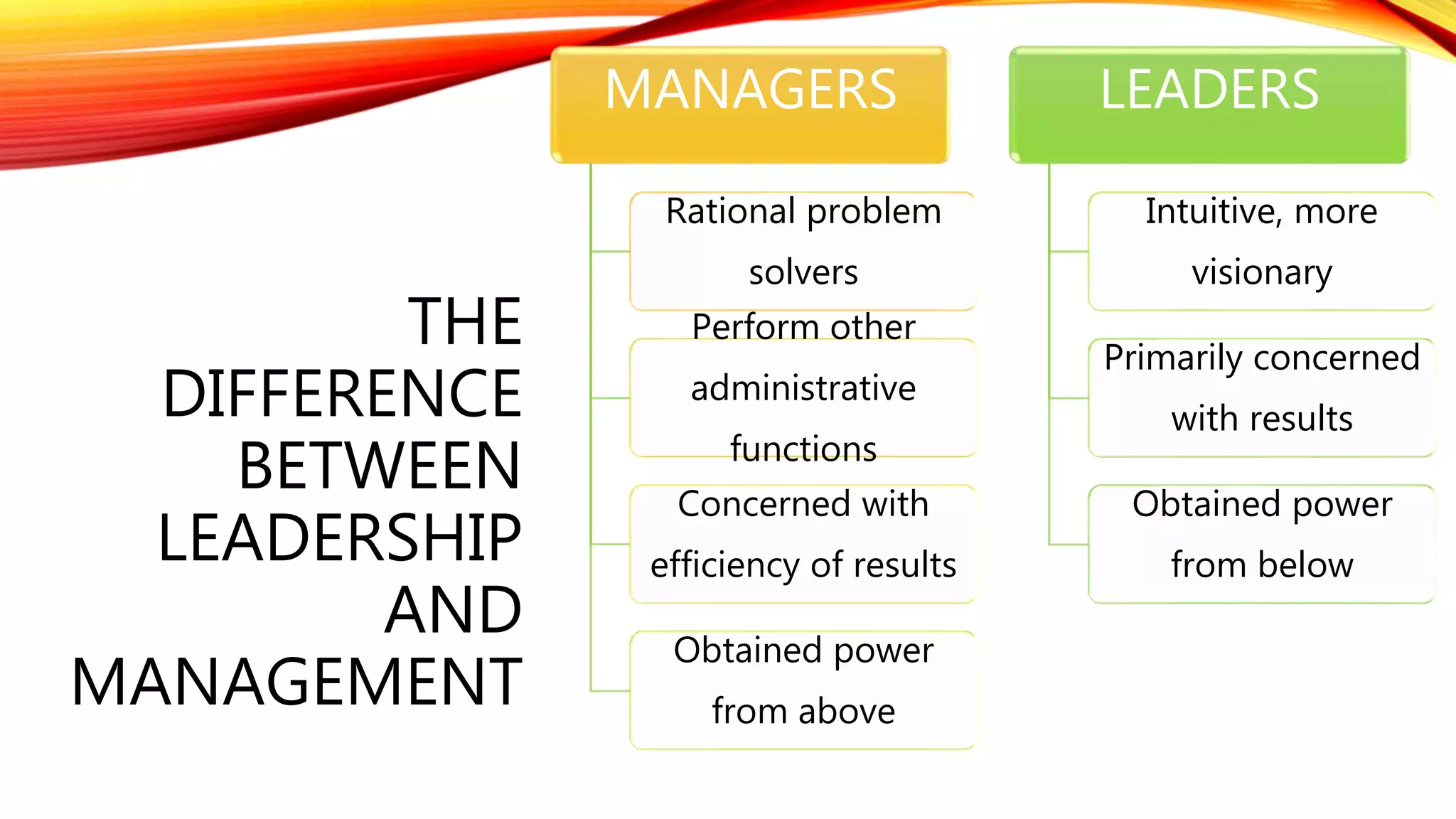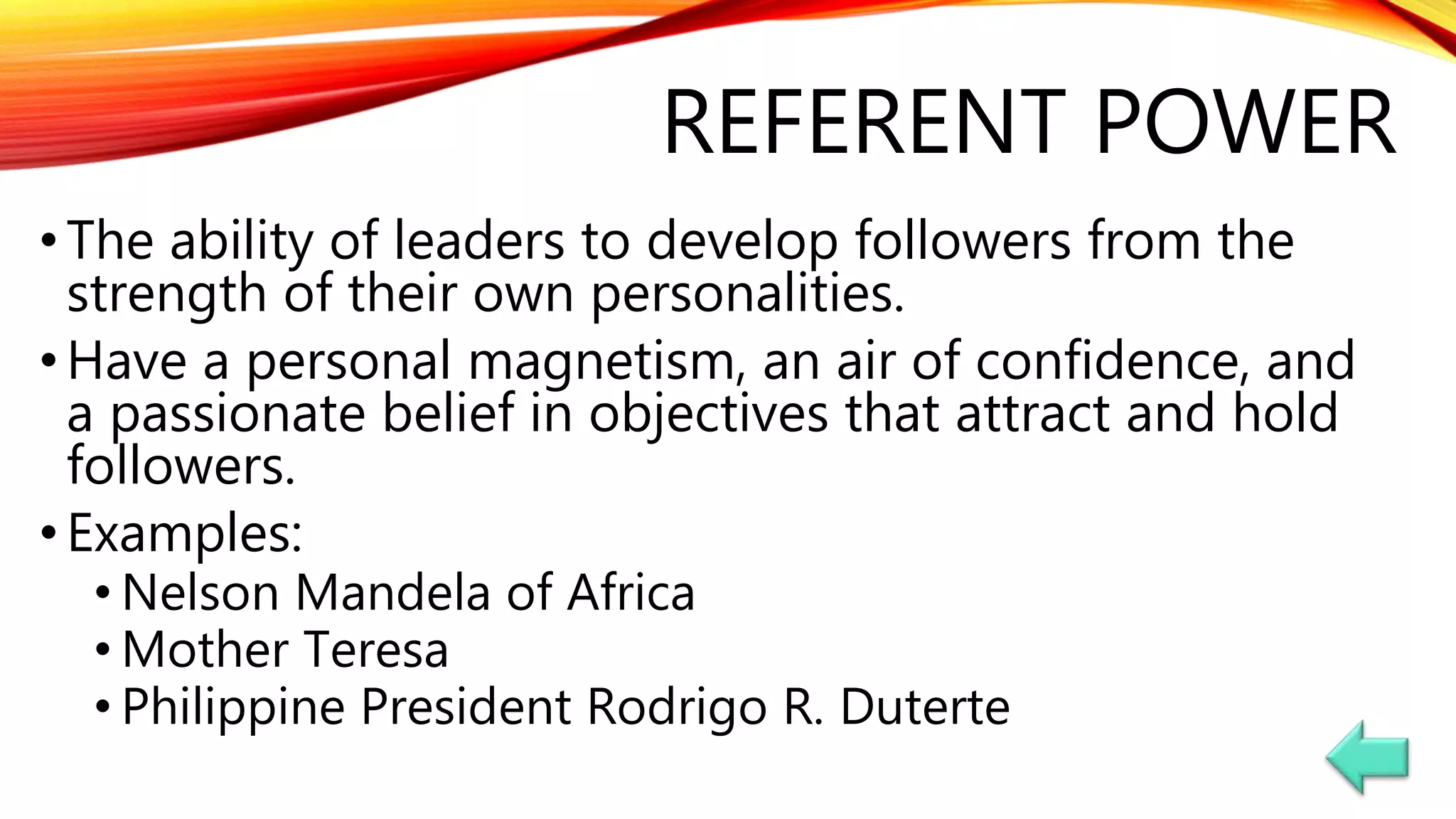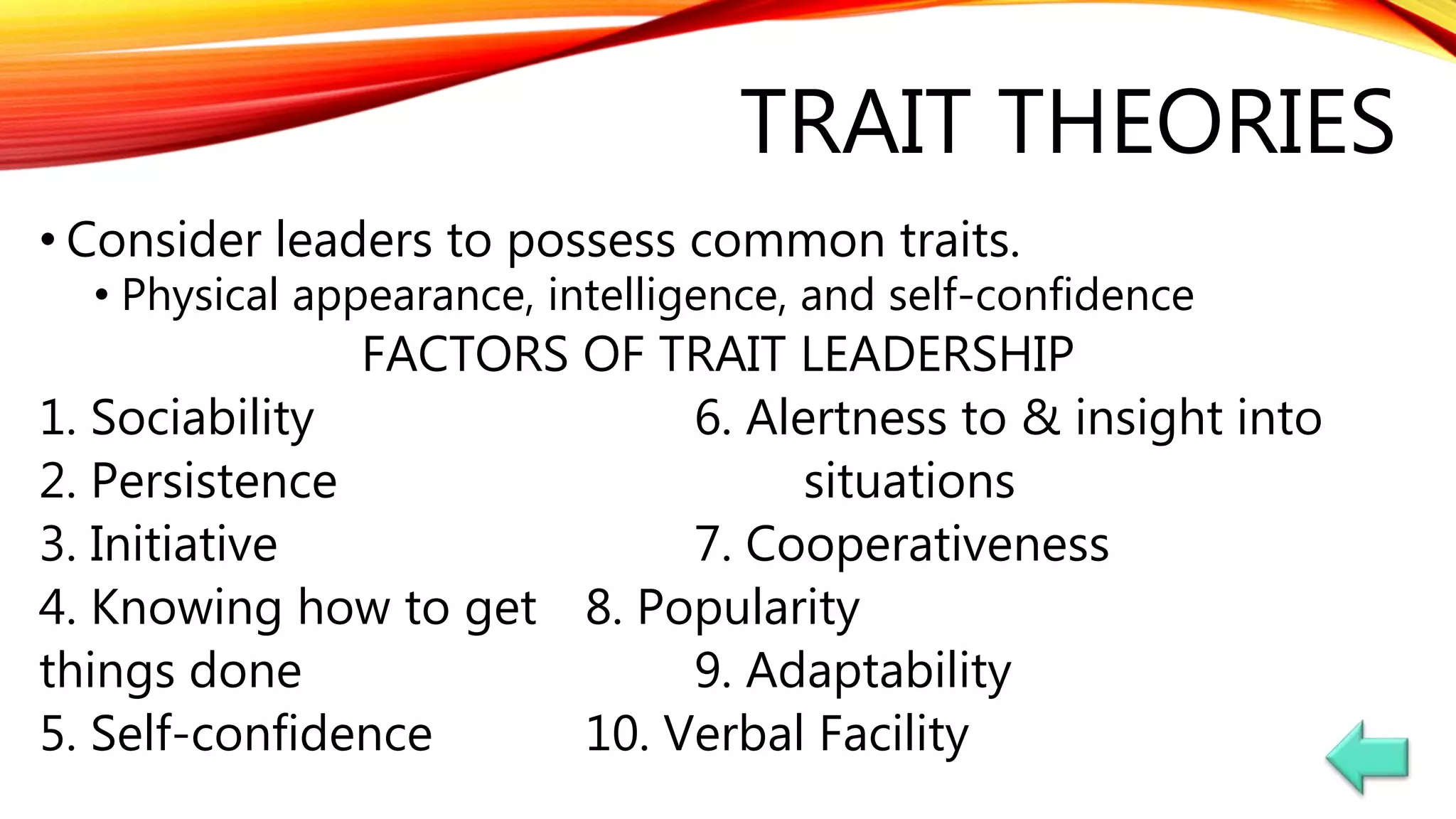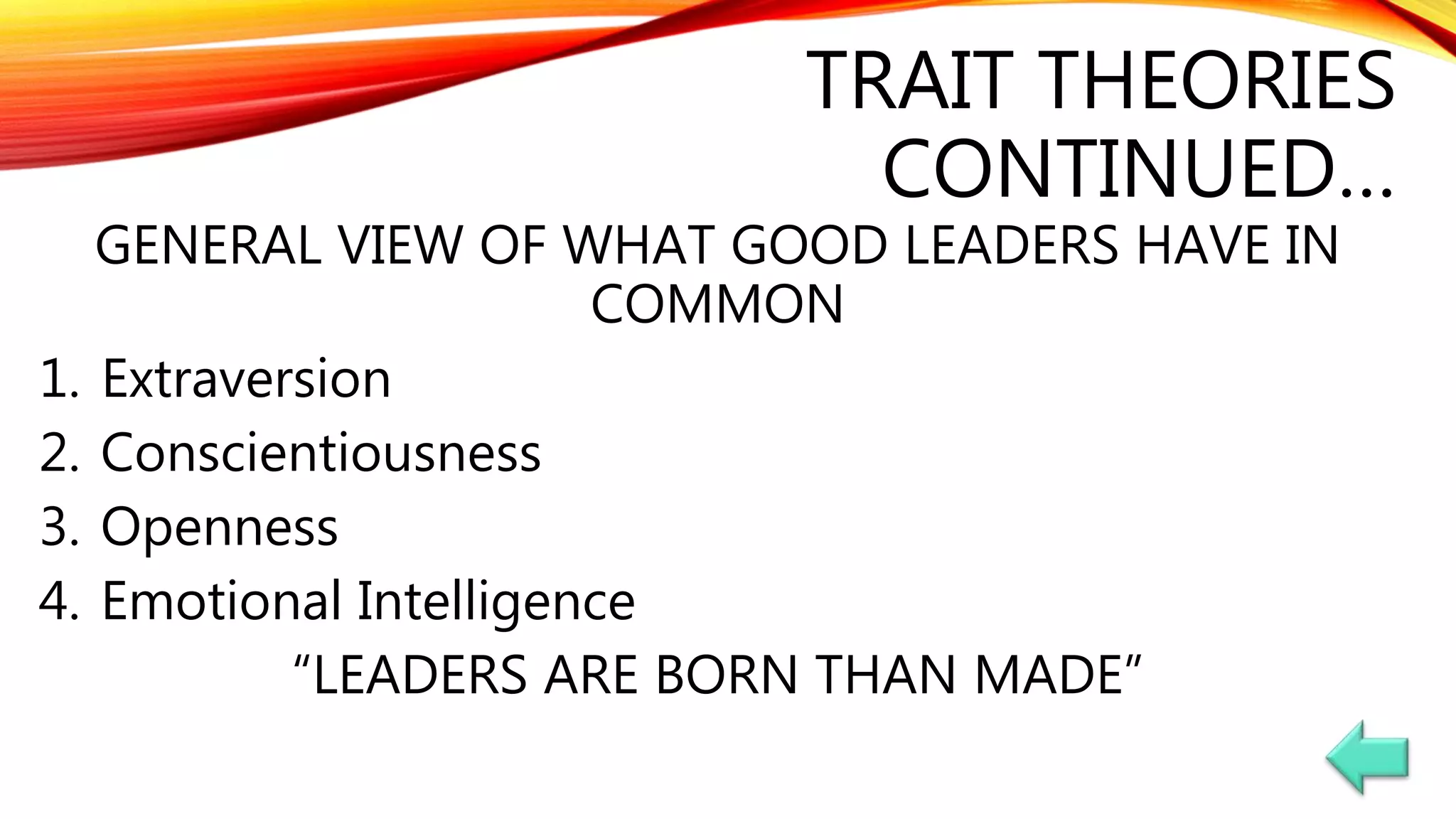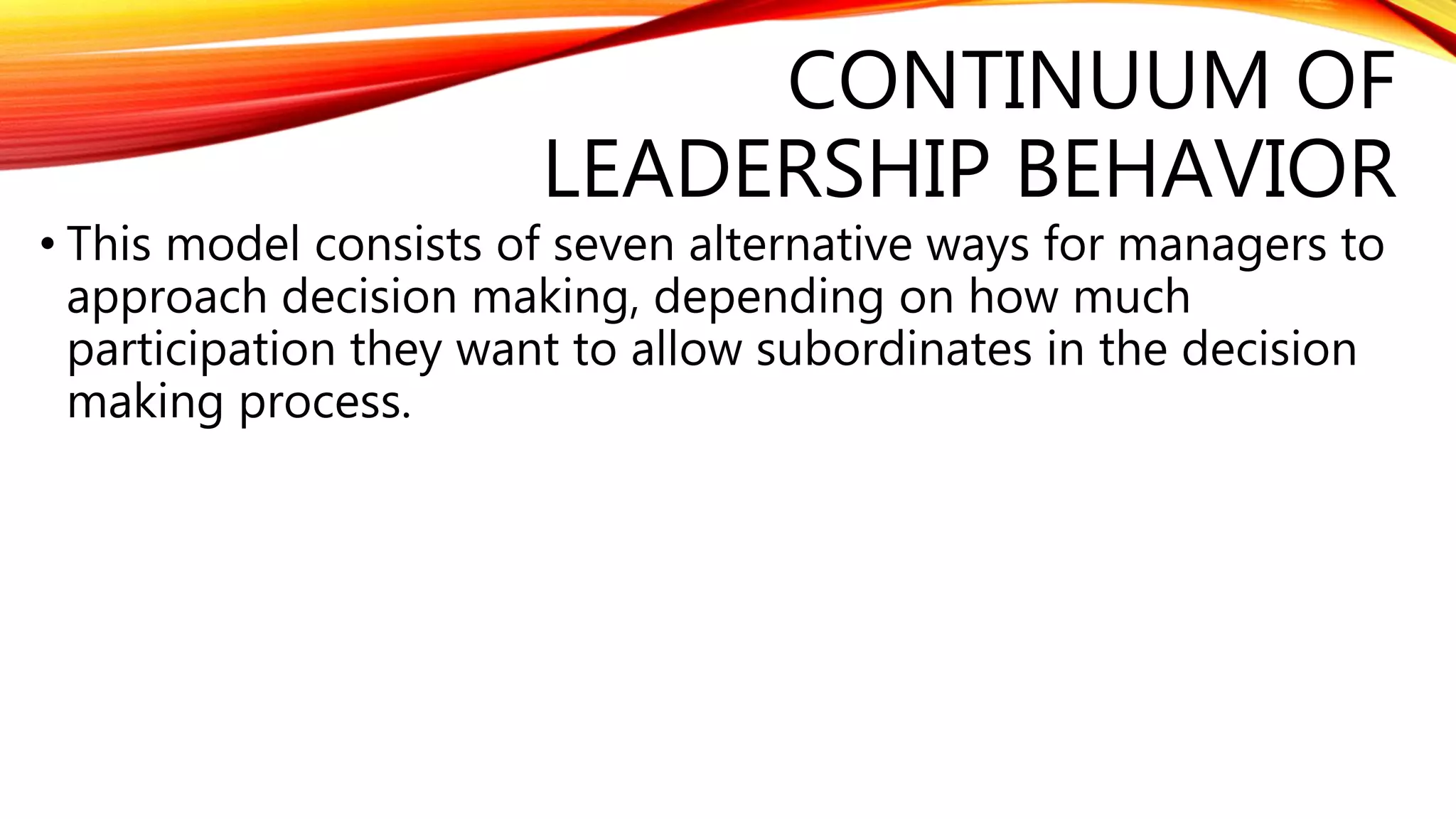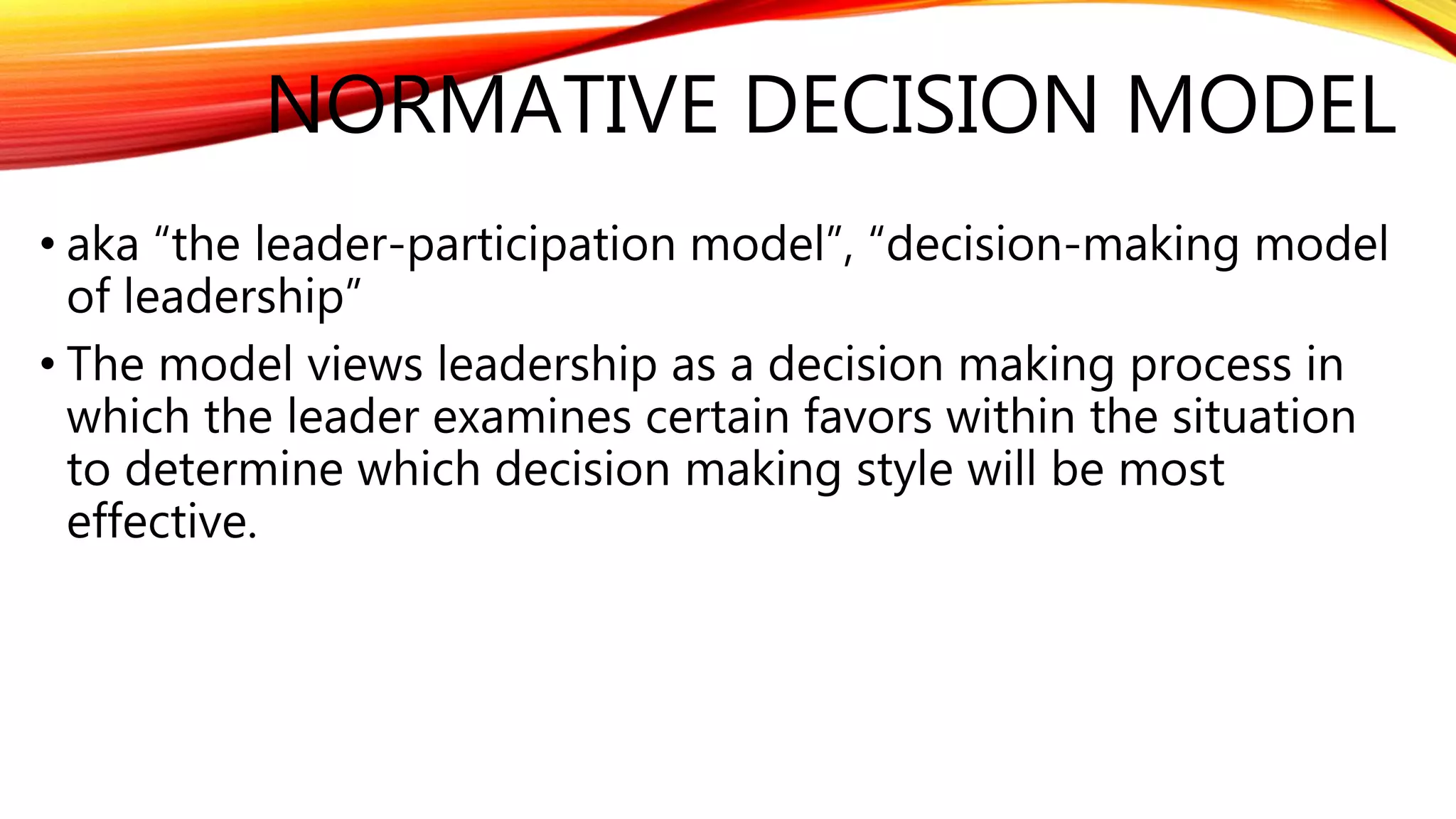The document discusses leadership as the process of guiding and directing people within an organization, differentiating it from management by emphasizing influence and vision. It outlines various leadership theories, types of power, and behaviors, highlighting the significance of understanding individual and situational factors in effective leadership practices. Additionally, it suggests a proposed research title focused on the approach to leadership among secondary school heads in specific divisions.


